Text & Photos : Manjira Majumdar
Sometime back, the West Bengal Tourism Corporation came up with the tagline, “Welcome to Bengal, the sweetest part of India”, with Shah Rukh Khan as its brand ambassador. Perhaps the idea behind this was to promote its cuisine alongside, known for its array of desserts, or mishti.
One can avail of a number of sweet trail walks and customised tour packages to visit places where a particular mishti has its origin. The city of Kolkata, however, ultimately showcases a variety of sweets through innumerable halwai or confectionary and the latest addition to this is the Mishti Hub set up at Eco Park in Rajarhat, a new township flourishing on the eastern part of the city. Under one roof a variety of specialities of various sweet confectionaries are on offer here.
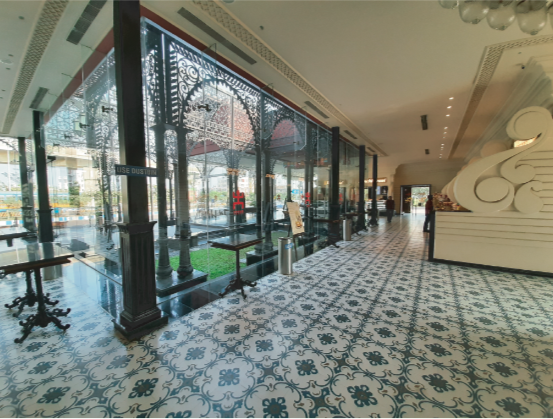
Bengali sweets are not just about rosogolla, sandesh and mishti doi (sweet curd). These are the staple made of cottage cheese or chhana, a trick learnt from the Portuguese. Hybridised into such an extent that we have had strawberry and kiwi flavoured sandesh to even cocoa flavoured ones. The slightly chocolate flavoured sandesh is today fused with so much chocolate that it is hard to tell it from a real chocolate. We will come to why this happened. In addition, we have tarts which are pastry crusts holding certain traditional sweets which are baked instead of fried or steamed. Not to mention a certain brand that has perfected the sandesh soufflé.
The origins of Bengal sweets
But start at the beginning we must. In ancient texts, we have a mention of milk based desserts but it was not until Bengal learnt the art of making chhana, that is, curdling milk with an acidic agent like lemon and separating the milk solids that chhana-based sweets emerged; a positive outcome of Portuguese influence. The khoya/kheer or thickened or dried milk-based sweets are more popular elsewhere in the country; namely the north.
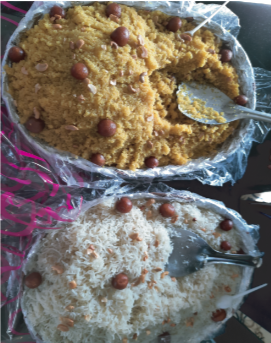
Bengal too has its range of khoya/kheer based sweets. In fact there are broadly four categories of sweets in this state. In addition to chhana-based sweets, there is ‘kheerer mishti’ or sweets made with kheer; the third category would be variants of north Indian sweets, some of which are derivatives of Turkish and Iranian delights such as balushahi, sohnpapri, gulab jamun to name a few.
Fourth, the local ethnic communities have added their touch with besan or moog ka laddoo, barfi and even a seasonal winter delight ghewar, very popular in Rajasthan. Chains of halwai ending with, Ram such as Ganguram, Haldiram, Bhikaram, Bancharam dot the cityscape, and stock a mix of sweets, in addition to savouries. However, even if some sweets of Bengal may have its origins outside the state, a whole lot of shops in North India go by the name of Bengal Sweets. On the other hand, the creative moira/modak/halwai or sweetmeat maker in Bengal, under the patronage of several rulers, perfected the art of sweet making. They innovated and tweaked several styles to come up with some presentations and even if these are not original per se, they are definitely unique to this region.
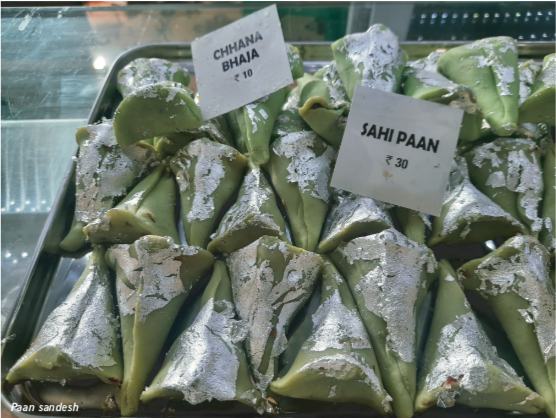
The sweet spongy rosogolla, made with chhana, is said to have been a discovery of Nobin Chandra Das, a famous sweetmeat-maker in the 19th century at his north Kolkata residence. He boiled the cheesy balls in sugary syrup to give us this sweet, now made popular by the K.C Das chain of shops, named after his son. Now rosogolla comes in all sorts of flavours – strawberry, pineapple and its bigger cousin is the pale yellow rajbhog, meaning fit for the kings.
In 2016, the WB government applied for the Geographical Identification tag for the rosogolla and a bitter battle was waged over the tag by Odisha government, which claimed the sweet to have originated much earlier in the latter state. But ultimately, WB received the GI tag because it was established that the sweet from Orissa was different in colour, texture and somewhat taste.
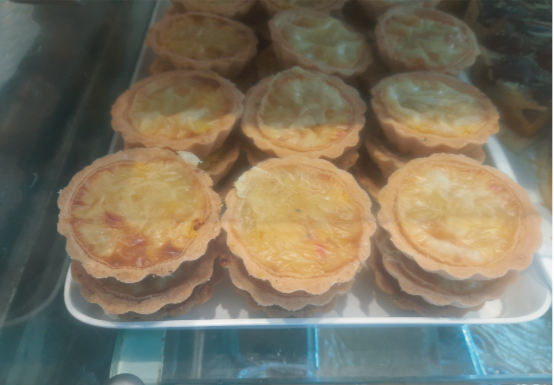
Red and black in colour
Likewise what is gulab jamun (plum) in most other states is known as pantua in Bengal. Reddish brown in colour, it is deep fried but the filling is again made of channa, sometimes mixed with semolina and flour, instead of khoya. Rose water and cardamom are added to the filling and when fried to a deep black, it assumes the name of kalojam – or black jamun. The channa bora – a speciality of Murshidabad district is like the rosogulla inside and very crusty black pantua outside!
The story behind the pantua, served in weddings, is that it is also known as the ‘ledikeni’. Confectioner Bhim Chandra Nag, another famous eponymous sweetshop in north Kolkata, renamed the pantua, Lady Canning on the occasion of the birthday of Lady Charlotte Canning, wife of the Governor General of India, Charles Canning. Over time, Lady Canning was corrupted to ‘ledikeni’.

Similar in colour – that is, reddish on the outer side – is the bolster-shaped lyangcha or lengcha of Bardhama district, which is made up of flour and milk powder and soaked in syrup for a longer time to give it a melt-in-the-mouth quality. Visitors to Shantiniketan prefer going by road so they can stop at Shaktigarh known for its lyangcha hub, along the way. There are rows of shops, each claiming to offer the best! There are different variants of this type of red fried sweets called, nikhuti, popular in Nadia district; the diamond-shaped chitrakoot is another.
Gradual make-over
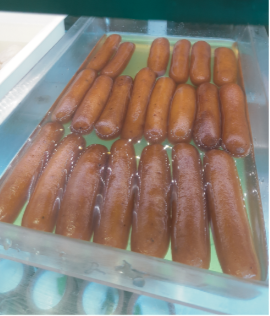
It was a matter of time before traditional sweets received a make-over in the state. The sweets making industry that falls under cottage industry is plagued by problems, which are quintessential to several such small scale industries: labour, raw materials and lack of demand of traditional sweets in place of western desserts served at wedding and celebrations. As the wedding dinners went international, so did the desserts. In several weddings, there is multi-cuisine on offer these days, with desserts from several countries as well.
With a proliferation of cakes, pastries, patties, sandwiches, pizzas and burger shops, the urban food habits have long been changing. The first noticeable signs were that the decrepit shops selling sweets and samosa, known locally as shingara started getting a smart look. Various sweet shops switched to the decor of a western cake shop, with the wares displayed attractively. Often, traditional and ‘fusion’ sweets share space with cupcakes!
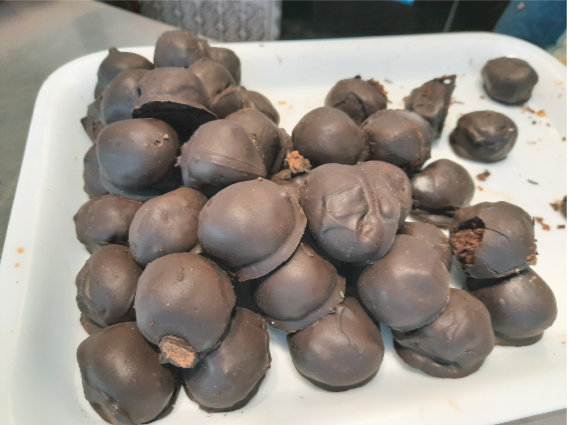
From all the sweets, the sandesh has received a great deal of makeover. There is a range of sandesh already existing depending on the area of its origin. In winter, when date palm jaggery or gur is in abundance, the ‘nolen gurer sandesh’ which is flavoured with this gur flood the market. Just like the very rustic Joynagar (in South 24-parganas district) moya, a sweet made with this jaggery and flattened rice or khoi, becomes a seasonal delicacy.

The best known date palm sandesh is the jolbhora (water-filled) taalsansh, which replicates the sugar palm fruit known as taalshansh in Bengal region. A thin skin, which is to be peeled off, reveals a fleshy jelly part, while the fruit holds watery fluid inside. The sandesh is moulded in the shape of this fruit and a hole is made in the centre to hold the liquid gur, before it is sealed. It is best eaten fresh for the gur subsequently dries and is comparable to liqueur chocolates. Perhaps the art was learnt from the French who once ruled Chandanagore in Hooghly district, which is particularly noted for this delicacy.
Similar to chocolates, various moulds are used to craft sandesh into various shapes – fish (earlier part of the wedding cuisine as it is a symbol of fertility); pots, flowers, leaves, and even small figures of bride and groom in traditional wedding attire! But now these shapes have become rare and sandesh comes topped with a tiniest slice of kiwi fruit or lime, when not dry fruits.
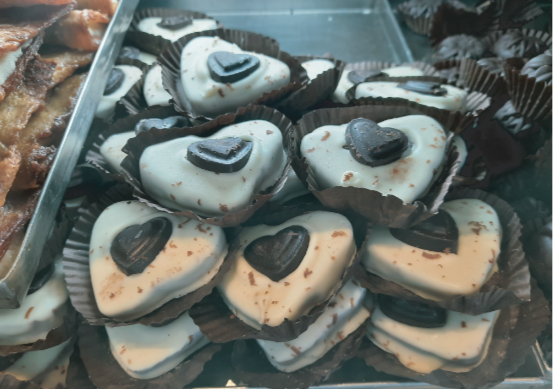
Kheer kadamba (kadamba is a round flower with white spiky petals) is another exotic Bengali sweet consisting of grated khoya and powdered sugar and this ball-shaped sweet comes in two layers. Lobongo (laung or clove) lotika is shaped to resemble a tiny envelope, which is then sealed with a single clove. The envelope is like a flour pastry but deep fried in ghee and the filling comprises khoya, grated coconut, raisins, cardamom and sometimes, with a touch of nutmeg.
Seasonal and festive fare
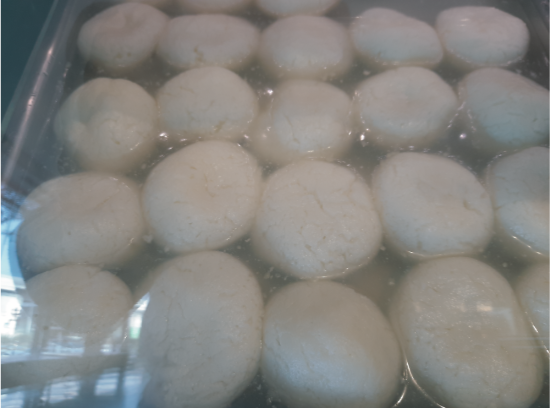
Bengalis as a rule have a sweet palate, even the curd served here is sweet and mishti doi and rabri are huge in their popularity. But the white rice lookalike sitabhog takes the cake! Sitabhog and mihidana resemble fluffy rice grains, the former white in colour and the latter with a yellowish tinge resembling a pulao. The sitabhog, made with chhana and powdered rice, is fried in ghee and soaked in sugar syrup. When coloured yellow, it is known as chanar pulao. The mihidana, its faithful companion, is made by mixing rice powder (usually Gobindo Bhog, or even Kamini Bhog) with besan and saffron. The mix is then fried in piping hot ghee through a large ladle with holes.
So many sweets are disguised as savouries. Thus, visitors will discover kheerer shingara when not stumbling upon the pale green patal mishti ( the vegetable gourd parwal boiled and soaked in syrup holding a channa filling and decorated with silver foil). Paan shaped betel leaf lookalike sandesh is available selectively.
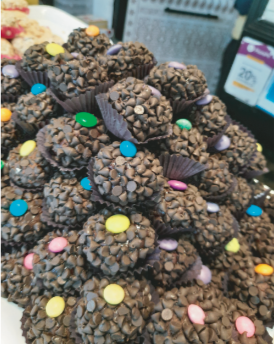
Shorbhaja is a delicacy made with milk cream and fried. It is a local speciality of Krisnanagore in Nadia district known as the birthplace of Shri Chaitnaya, and the Vaishanva cult. Therefore milk and milk products are very popular here and non-vegetarian items are often frowned upon.
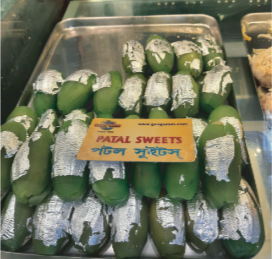
Sitabhog, mihidana, malai chom chom, steamed mishti doi are again very typical of the various regions or districts; from the south to the north. A random sampling will be monda, made with coconut and gur, a speciality of Bardhaman, to kachagolla of Shantipur, again located in Nadia district, known for its handloom saris and milk-based sweets. The city shops have come up with new names for old sweets such as Abar Khabo (will eat again); Paradise, Rainbow (streaked with various colours), et al.
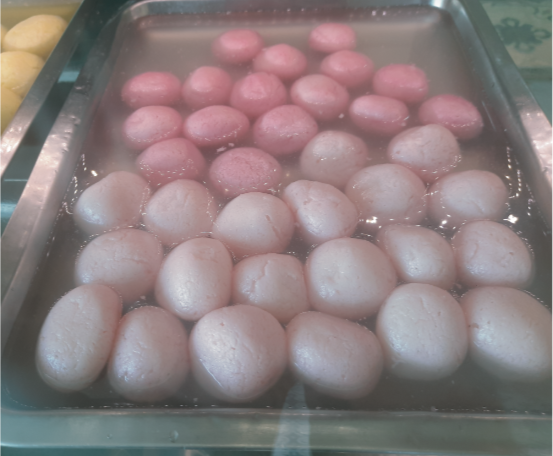
There has been a marked change in dietary habits of the younger generation. Fast food synonymous with junk food is a quick fix of snacks for the younger generation. No longer are lunch boxes packed with homemade savouries and sweets. For a range of mishti used to be also prepared at home and typically during festive times.
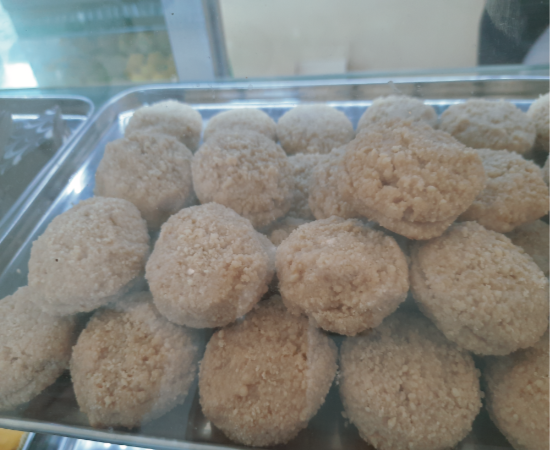
But newer trends and innovation in mishti-making is taking over. The butterscotch sandesh has been edged out by various sandesh hiding timidly inside solid chocolates, white and dark. Mihidana in small portions are baked and held inside pastry crusts. And baked rosogolla and sandesh are huge hits at weddings.
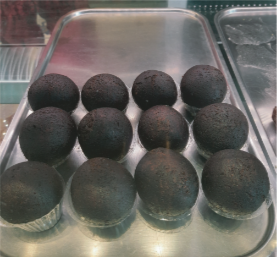
So take your pick. Here are some broad seasonal and festive specialities. During Shivaratri and Doljatra (Holi) kalo jam and kheerer chop are popular; Saraswati puja: tilkodombo (white kadam flower looking garnished with sesame seeds) is offered as prashad ; Sonkranti: pathisapta (crepe) , dudh puli and pithe; Lakshmi and Kali puja: sitabhog, jolbhora, darbesh, malai chop; Durga puja: all types along with naru (made with coconut therefore auspicious); Janmashtami: sweet items made from taal( another variety of sugar palm fruit). These are taal bora, taal kheer to name a couple; Rakhi Bandhan: boondiya; Rathyatra: dried khaja, jilipi or jalebi; Poila Boisakh or Bengali New Year when Lord Ganesha is evoked: mihidana ladoo and modak, with its typical flour coating. And when sons-in-law are feted, the table groans with not only a number of vegetarian and non-vegetarian items, but also a platter of the best sweets available.

Bengali sweets are all-encompassing, smacking of inclusivity and carrying a tag of rich heritage. The patronage of past rulers combined with foreign influences are made perfect with local, refined sensibilities.

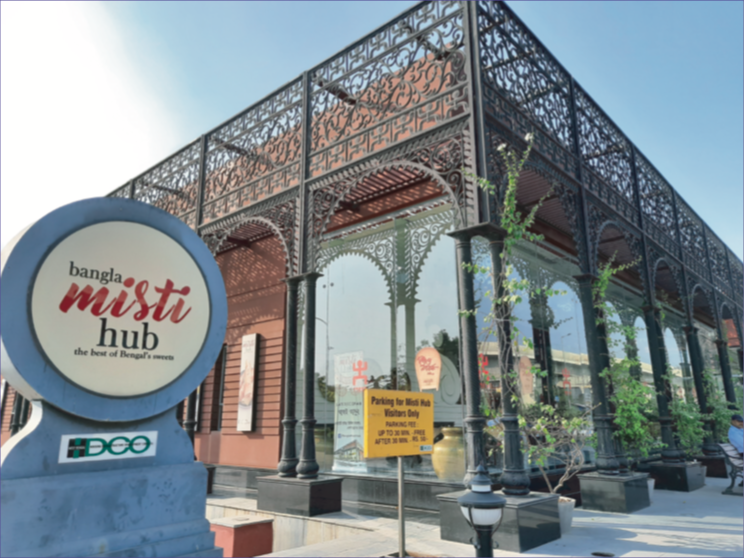
 [/column]
[/column]